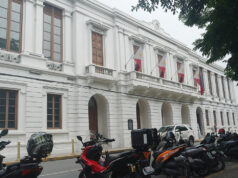Yields on government securities climb as inflation picks up to fresh peak in Aug.
By Mark T. Amoguis, Researcher
GOVERNMENT securities’ (GS) yields rose across-the-board last week after the release of surprising August inflation print, which could bolster the case for another rate hike by the central bank in its upcoming policy meeting.
Bond prices dipped as GS yields went up by an average of 42.19 basis points (bps) week on week, data from the Philippine Dealing & Exchange Corp. as of Sept. 7 showed.
Analysts attributed this increase to the faster-than-expected August inflation figure.
“Elevated domestic inflation increased the likelihood of another rate hike from the BSP (Bangko Sentral ng Pilipinas) this month. The rise in yields was tempered by lingering trade concerns abroad, especially between the US and China,” said Guian Angelo S. Dumalagan, market economist at the Land Bank of the Philippines (LANDBANK).
“During the week, yields fell only on Tuesday and rose for all other days of the week,” he noted.
Carlyn Therese X. Dulay, first vice-president and head of institutional sales at Security Bank Corp., agreed: “The higher-than -expected inflation figure at 6.4% versus estimates between 5.90%-6.10% caused yields to inch upward across-the-board as traders and market participants impute the possibility of more aggressive movement from the Monetary Board in the upcoming meeting scheduled for Sept. 27.”
The Philippine Statistics Authority reported last week that prices of widely used goods surged by 6.4% in August, higher than 5.7% in July and 2.6% in August last year, due to higher food costs. The latest reading was the fastest in nearly a decade or since March 2009’s 6.6%.
The August print also surpassed the 5.5-6.2% estimate range given by the BSP Department of Economic Research and the 5.9% median in BusinessWorld’s poll of economists, which was also the estimate of the Department of Finance.
Headline inflation for the year thus far averaged at 4.8%, already beyond the central bank’s 2-4% target range but below its upwardly revised 4.9% forecast for 2018.
With this result, the market now expects the BSP’s Monetary Board to hike its policy rates again in its Sept. 27 meeting. Benchmark rates currently range from 3.5-4.5%.
At the secondary market last Friday, yields climbed across the curve with rates of the 91-, 182-, and 364-day Treasury bills at the short end increasing by 86.67 bps, 9.33 bps, and 4.17 bps, respectively, to fetch 4.0804%, 4.1836%, and 4.9065%.
In the belly, yields on the two-, three-, four-, five-, and seven-year Treasury bonds (T-bond) surged by 69.50 bps, 45.03 bps, 38.39 bps, 77.79 bps, and 48.93 bps, respectively, to end at 5.6661%, 5.5237%, 6.2607%, 6.5696%, and 6.619%.
At the long end, the 10- and 20-year bonds went up 30.27 bps and 11.79 bps to yield 6.6727% and 7.4396%, respectively.
For this week, Security Bank’s Ms. Dulay expects yields to continue to inch upward “as market participants adjust their portfolios and while dealers determine the levels at which market will find an equilibrium, especially with risks of both supply and NFP (non-farm payrolls) figures out Friday night.”
LANDBANK’s Mr. Dumalagan concurred, saying: “GS yields are still expected to remain elevated [this] week amid possibly more hawkish cues from the BSP, ECB (European Central Bank) and US Federal Reserve.”
“Likely upbeat US labor reports…could further solidify views of another rate hike from the US central bank this month. This, along with bets of more tightening moves from the BSP, could push yields higher. The rise in interest rates might be tempered by safe-haven buying amid lingering geopolitical tensions abroad,” Mr. Dumalagan added.
Last Friday, the US Bureau of Labor Statistics reported that non-farm payrolls increased by 201,000 in August.
Meanwhile, Helen G. Oleta, trust trading head at Rizal Commercial Banking Corp., said trading this week is “definitely still going to be sideways.”
“We’re going to have a 10-year bond auction. So market is saying, ‘Are we going to see higher levels with BTr (Bureau of the Treasury) to accept as high as 6.875% to near 7%?’ But I think with this being temporary — we believe it’s temporary — they (BTr) might not accept this higher rate,” she said.
For her part, Security Bank’s Ms. Dulay said: “T-bills are expected to trend higher by 10-20 (bps) across the curve in [this] week’s auction, while the 10-63 reissuance is expected to print between 6.9%-7.20%.”



